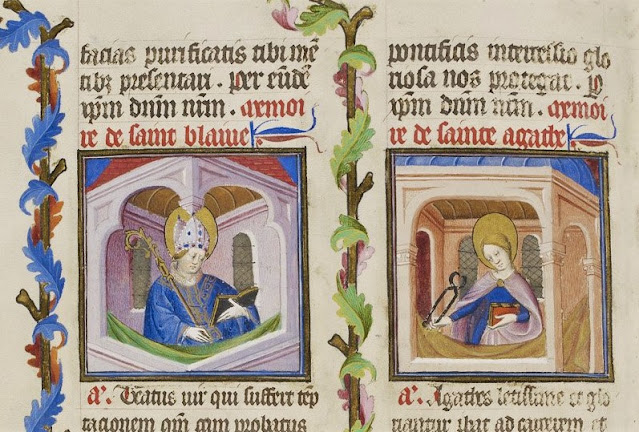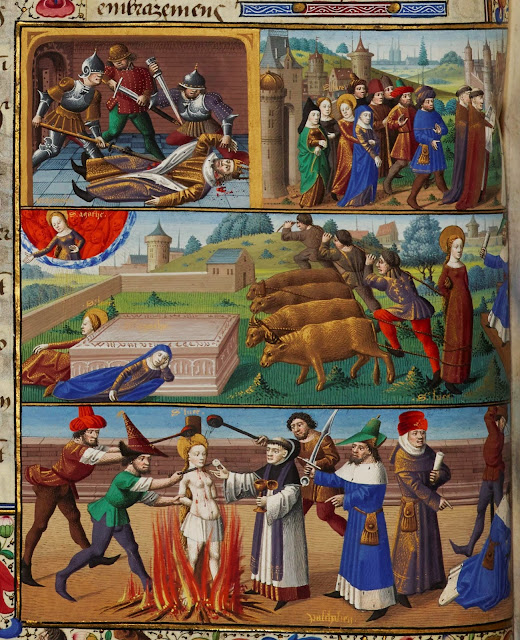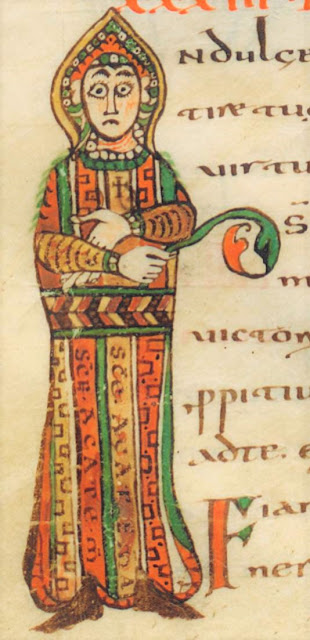Early in June of 2013 I inadvertently discovered a smallish lump on my left breast.
Initially I didn't feel very alarmed because I have been subject to skin cysts and abscesses for my entire life and reckoned on this being just another one. However, the location is one that any woman should consider an especially sensitive area and worth following up on any change. So, I quickly made an appointment to see my gynecologist.
His reaction was more cautious than my own and he suggested some investigation. There was an ultrasound, which seemed inconclusive, then a biopsy. There were no results for weeks, July 4th came and went. No news is generally good news, I thought.
Then, on the early afternoon of July 10th he called with the news that no one ever wants to hear. It was cancer. It was, in fact, a fairly large breast cancer tumor. My next move, he said was to "begin interviewing" breast surgeons, pronto. Note the plural. He was wise enough to know that sometimes you have to see multiple doctors to find the one for you. He also gave me a couple of names.
With that announcement my life turned upside down. I quickly began interviewing doctors as well as investigating hospitals. I visited doctors from Mount Sinai, New York-Presbyterian and Lenox Hill hospitals, but I eventually settled on a petite woman who is a surgeon at Memorial Sloan-Kettering Hospital, the famous cancer only hospital just a few blocks from my house. It was a perfect fit.
There were many more tests in store, however. Sloan-Kettering prefers to do their own tests and preparation work, so I had to do many of these over again. Also, my primary care doctor wanted to do her own assessment about my ability to undergo the surgery. So, it wasn't until September 12 that I was operated on. By then the cancer, which was very aggressive, had grown large enough to be visible under my clothing!
My left breast was completely removed and a lumpectomy was also done on the right, due to some suspicious cells found in it. My vanity (and to tell the truth, my laziness) insisted on a reconstruction. Unfortunately, I turned out to be one of the percentage of women who cannot tolerate the procedure for a reconstruction. It caused incredible pain and complications and required a second surgery to reverse. Healing was, therefore, a slow process. It delayed the beginning of chemotherapy and was complicated by the fact that I had accepted an apartment in a very desirable senior residence in my neighborhood just before the diagnosis. I paid three months of double rent in order not to lose that apartment and finally moved in mid-December, three weeks after starting chemotherapy. It was a genuine ordeal. Chemo ended in April, but it took nearly a year for things like my taste to return to normal. Fortunately, while I did lose some hair, I never lost all of it. My hair is very thick and it just thinned out a lot.
In those long, frightening months I gained a new patroness, Saint Agatha, patroness of women with breast cancer. Thus my first new blog following the surgery was posted in honor of her feast day, which is February 5th.
According to these beliefs, Agatha was one of that group of early Christian women saints who apparently aroused the ire of their pagan contemporaries by their refusal to marry or to submit to sexual advances because of their Christian faith. In an era when a woman had virtually no control over her own person, but was subject to the domination of first her father, who decided on her eventual destiny through his decision of whom she should marry, and then of her husband, once married, this refusal was evidence of major rebellion and was deeply unsettling. Tales abound of the courage and fortitude of these young women as they withstood torture aimed at coercing them to accept arranged or lecherous marriages and efforts to detach them from their adherence to Christ. In Agatha’s case she is reputed to have attracted the attention of Quintianus, the prefect of the region. Her refusal of his advances drove him to extremes of cruelty, among which was confinement in a brothel, imprisonment and the eventual horror of cutting off her breasts.
According to later legends, she was miraculously healed from this terrible injury by an apparition of Saint Peter himself, but eventually died in prison from the results of her ordeals.
Agatha's Story
Agatha is among the most important of the female early Christian martyrs. She is among those who are named in the Roman Canon, now called Eucharistic Prayer I. They are, in order: Felicity, Perpetua, Agatha, Lucy, Agnes, Cecilia and Anastasia. By virtue of their being named in this most important prayer, used for centuries at almost every Mass, these women have a special place in Christian history and imagination. Agatha was also believed to be a major influence on one of the other saints in this exclusive list, Saint Lucy, and has for centuries been a frequently imaged figure in Christian art.
 |
Lorenzo Lotto, Saint Lucy at the Tomb of Saint Agatha Italian, 1532 Iesi, Pinacoteca Civica |
Agatha, properly Agatha of Catania in Sicily, appears to have been martyred during the third century, probably in the persecution under the Emperor Decius. As is true for many of the early martyrs, there is little doubt about the fact of her martyrdom and her early veneration by Christians. However, there is virtually no contemporary evidence for the reason and the manner of it, aside from traditional beliefs. 1
According to these beliefs, Agatha was one of that group of early Christian women saints who apparently aroused the ire of their pagan contemporaries by their refusal to marry or to submit to sexual advances because of their Christian faith. In an era when a woman had virtually no control over her own person, but was subject to the domination of first her father, who decided on her eventual destiny through his decision of whom she should marry, and then of her husband, once married, this refusal was evidence of major rebellion and was deeply unsettling. Tales abound of the courage and fortitude of these young women as they withstood torture aimed at coercing them to accept arranged or lecherous marriages and efforts to detach them from their adherence to Christ. In Agatha’s case she is reputed to have attracted the attention of Quintianus, the prefect of the region. Her refusal of his advances drove him to extremes of cruelty, among which was confinement in a brothel, imprisonment and the eventual horror of cutting off her breasts.
I, for one, believe that there is often a kernel of truth in some of these tales, but it is impossible to know at this distance in time, what the true facts were.
 |
| Alessandro Turchi, Saint Agatha Attended by Saint Peter and an Angel in Prison Italian, c. 1640-1645 Baltimore, The Walters Art Museum |
Iconography of Saint Agatha
Be that as it may, the belief appears fairly early on that one of her torments was the hacking off of her breasts by the Roman authorities. Hence, by the Middle Ages, Agatha is frequently shown holding a dish on which are placed her two breasts. This is her identifying mark, her iconographic symbol.
 |
Piero della Francesca, Saint Agatha From the Polyptych of Saint Anthony Italian, c. 1460 Perugia, Galleria Nazionale dell'Umbria |
However, the earliest images of Agatha do not make reference to this event. She appears as early as the sixth century in the procession of female martyrs in the nave of the church of Sant’Appolinare Nuovo in Ravenna.
 |
Saint Agatha in the Procession of Female Martyrs
Byzantine Mosaic, Second half of 6th century
Ravenna, Basilica of Sant'Appollinare Nuovo
|
She stands between Saints Agnes (identified by her familiar symbol of the lamb) and Pelagia. Like most of the saints in the procession (and unlike Agnes) she has no special identifying marks. Each of the figures stands before a palm tree and carries a crown made of leaves with a jeweled center. These are traditional references to martyrdom and virtually identical to those borne by the figures of male martyr saints that march down the opposite side of the nave of Sant’Appolinare.
In the early medieval period Agatha appears as a sort of stock figure in illuminated manuscripts. As in the mosaic at Sant’Appolinare there is no reference to the specific circumstances of her martyrdom.
Part of the Heavenly Court
In the images of Agatha as a saint in glory she is frequently shown holding a platter or dish on which repose her breasts. As the shape of the breasts resembles the shape of bells she is, for this reason, also the patron saint of bronze casters, among whose productions are bells.
 |
Francisco de Zurbaran, Saint Agatha
Spanish, c. 1630-1633
Montpelier, Musée Fabre
|
As the Suffering Martyr
The other, suffering image, which appears to have been equally popular, shows her undergoing the act of her martyrdom, as her breasts are cut off. This is shown in various ways.
In most of the earliest of these images she is shown as if on a cross, with arms spread out.
 |
| The Martyrdom of Saint Agatha From the Carrow Psalter-Hours English (East Anglia), c. 1250 Baltimore, Walters Art Museum MS W.34, fol.19v |
 |
The Martyrdom of St. Agatha
From the Livre d'images de madame Marie
Belgian (Hainault), c. 1285-1290
Paris, Bibliotheque nationale de France
MS Nouvelle Aquisition Francaise 16251, fol. 97v |
 |
The Martyrdom of Saint Agatha From the Sermons of Maurice de Sully Italian (Milan or Genoa), c. 1320-1330 Paris, Bibliotheque nationale de France MS Francais 187, fol. 38v |
 |
| The Martyrdom of Saint Agatha From a Prayerbook Germany (Lower Rhineland), c. 1430-1435 London, British Library MS Egerton 859, fol.29 |
In later images she is shown as if chained to a column.
 |
Sebastiano del Piombo, The Martyrdom of Saint Agatha Italian, 1520 Florence, Palazzo Pitti |
 |
Philippe de Champaigne, The Martyrdom of Saint Agatha French, c. 1650-1675 Paris, Musée du Louvre |
Both postures echo images of the sufferings of Jesus, as He was on the cross or at the scourging at the pillar, and underlines the martyr’s union with the suffering Christ. Some effort is sometimes made to preserve her modesty, but in most images she is shown naked to the waist, as she probably was in actuality. Most of the time the torturers attack her with what look like gardening shears or bolt cutters, a truly nasty idea.
Most of the images have a curiously static, nearly symbolic, feel to them. They are more like a frozen tableau of implied horror than a true reflection of it.
However, there is one late image that stands out because it seems to capture the reality of what Agatha must have undergone. This is a painting by Giovanni Battista Tiepolo now in the Gemäldegalerie in Berlin. It shows not the moment of torture, but its aftermath.
 |
Giovanni Battista Tiepolo, The Martyrdom of St. Agatha Italian, 1726 Berlin, Gemäldegalerie der Staatliche Museen zu Berlin |
Agatha has collapsed on what appear to be steps. She is supported by another woman who holds a bloody cloth up to cover her mutilated torso. Behind Agatha stand the executioner, holding a bloodied sword, and an assistant, who holds the typical platter with her amputated breasts. Agatha herself gazes upward toward the heavens, but her face reflects her pain, her shock and her steadfast faith.
This is an image to which I can fully relate for it mirrors my own feelings about my diagnosis and the surgery that followed it. Although done to save my life for the time being, the effect of the mastectomy and the painful aftermath has brought me to feel very close to this image of St. Agatha, my newest patron saint. Even given the advanced surgery of our own time, this loss is a difficult one to come to terms with and, in my own case at least, has been an extremely painful experience.
I am aware that there are some who feel that Agatha should not be the patron of women with breast cancer because she did not lose her breasts to cancer. I find this attitude ugly and small-minded. Surely, she is the saint who, in her own sufferings, can relate most closely to those who suffer this mutilation for any reason. Whether done in sanitary, hospital conditions in order to remove a life-threatening cancer (and I have personally known three women who have died from this disease) or whether done as a brutal act of torture the fact is the same, the pain is real even when mitigated by drugs, the healing is slow, if it happens at all, the loss is permanent.
So, Saint Agatha, please pray for all women who have to suffer the amputation of breast tissue, for whatever reason.
© M. Duffy, 2014 and 2024
_________________________________________________________
1. 1. Kirsch, Johann Peter. "St. Agatha." The Catholic Encyclopedia. Vol. 1. New York: Robert Appleton Company, 1907. 5 Feb. 2014 .








No comments:
Post a Comment